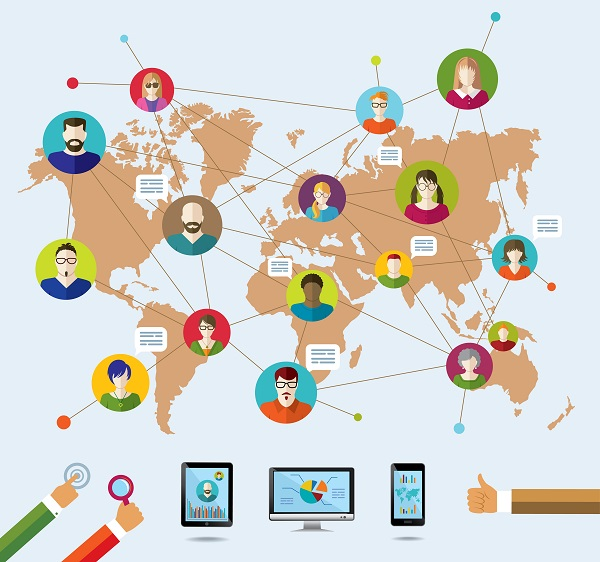ATD Blog
Developing Creative Human Resources for the Preparation of the Fourth Industrial Revolution
Thu Mar 09 2017

Bookmark
한국어
Human development has always been accompanied by the advent of innovative technologies and corresponding paradigms. The emergence of new technologies led to a variety of industrial developments, which soon led to alterations of social and economic structure.
Humankind has experienced vast transformations on industries, which in turn changed the economy and society; we call these transformations “industrial revolutions.” There have been three so far: the first industrial revolution, or the invention of the steam engine replacing human physical labor; the second industrial revolution, or the full-scale mass production; and the third industrial revolution, or the hint of a prelude for the era of digital industries. Now, we are looking at the dawn of the fourth industrial revolution, an era of the “cyber-physical system.”
The discussion of the fourth industrial revolution emerged during the 46th World Economic Forum (WEF) with the chairman, Klaus Schwab, discussing the latest technological transformations. WEF defined the fourth industrial revolution as a “fusion of technologies that is blurring the lines between the physical, digital, and biological spheres,” and predicted that the fourth industrial revolution will make 7.1 million jobs disappear and create 2 million jobs in the next five years. In other words, changes in the future industrial landscape will alter the occupational landscape, with simple, repetitive office administrative or low-skilled tasks being replaced by new technologies.
Thus, there is increased demand for human resources with competencies that are irreplaceable by automated technologies, such as creativity, innovation, sensitivity, and social skills, as well as the capability to flexibly cope with the rapid changes. The time has come to let go of the outdated human development strategy that focused mainly on the acquisition of the knowledge and move toward the new paradigm: talented individuals who can apply existing knowledge, create new ideas, and learn from trial and error.
Developing Creative Human Resources
The 70-20-10 model has emerged as one creative human resource development strategy. It proposes that 70 percent of learning is experiential 20 percent is social, and 10 percent is formal. The model emphasizes providing appropriate learning environments that encourage self-driven workplace learning, stepping away from the past formative learning framework. However, 70 percent of the learning in companies is still in the form of lecture-based formative learning; learning through experience, practice, and collaboration is hard to find.
Microsoft’s Garage Building
Experiential learning contains informal learning through on-the-job performance, which is also known as workplace learning. Workplace learning is an efficient learning strategy that can maximize the learning transfer. For example, Microsoft’s Garage project is an innovative support system that aids employees’ self-directed research and development, leading to the creation of new service ideas. Because they can research whatever they’d like, employees can manage their own learning. Microsoft also established Garage project spaces in cities in 16 countries to support collaborative research and learning. Employees present their developed products on the market and seek feedback to improve their products. Microsoft provides a natural platform for trial and error to help employees enhance their creativity and expand its research and development.
LG Group’s Social Learning
Social learning is learning through interaction and collaboration. It improves creativity because it helps people add what they know to the organization’s collective intelligence. LG Group is one of the corporations that exemplifies social learning. In the company, there are three channels where employees share and accumulate their own expertise and experiences, known as LG Open Talks, LG-Life, and Ignite LG. In LG Open Talks, three executive members share their noteworthy success stories, ideas, and knowledge, and discuss core ideas for 15 minutes. Additionally, they apply new ideas derived from the discussion to every business performed in LG groups. Through the in-company portal site LG-Life, employees can offer product ideas, develop prototype products, check the validity of a product, and recommend improvements by participating in such activities as Future Challenger, Big Question, and LG Dots. Ignite LG is a presentation party that serves as a place for successful learning, sharing, and exchanging ideas. There is no limit on topics, and employees can describe their original ideas for five minutes.
This kind of social learning reflects the “hyper-connected” characteristic of the fourth industrial revolution because it constantly accumulates, connects, and combines individual knowledge to create innovative ideas. In addition, peer learning helps solve problems more efficiently and creatively by sharing various experiences, including failures.
Google’s Google Edu
Formal learning traditionally means collective learning, including lectures and instructor-led education. As technology develops, formal learning has taken on additional forms, including e-learning, mobile learning, and smart learning. Amid various alternatives, learning curation, or categorizing and distributing personalized learning content to learners, has been proposed as the most efficient approach to providing effective learning experiences. An exemplary case of learning curation is Google Edu, a platform where Google employees can take part in relevant programs to advance their career path, including programming language, data-based technology, and communication skills. Because workers could be provided with a plethora of learning experiences based on what they want or need to learn, they could expand their knowledge and thinking, which ultimately leads to the utilization of knowledge and creation of new idea. This could form a basis of creativity development.
To prepare for the fourth industrial revolution, companies must cultivate creative human resources that can effectively utilize technology and produce new products. In this new era, the 70-20-10 model can foster the development of creative human resources, and lead the transformation of the human resource development paradigm into a learning framework characterized by applying informal learning, social learning, formal learning, and learning curation. Therefore, application of the 70-20-10 model will be a big step forward for human resource development.
To learn more about this topic, join me March 23 in Seoul for ATD’s 2017 Korea Summit.

